Today, we’re covering Ayurvedic approach to skin and how to get your vitality back.
My guest is Dr. Keesha Ewers. She is board certified in functional medicine and Ayurvedic medicine, as well as being a doctor of sexology, psychotherapist, energy worker, yoga teacher, and host of the Healthy YOU! Radio network.
Dr. Keesha Ewers has been in the medical field for over 30 years. Her constant thirst for knowledge in the pursuit of finding answers to her patient’s problems has taken her around the world.
And, after helping others and curing herself from rheumatoid arthritis, a supposedly incurable autoimmune disease, Dr. Keesha Ewers developed the Freedom Framework, which is designed to get to the root problem of any disease or imbalance.
Her online programs and videos can be found at www.DrKeesha.com
In this interview, we discuss with Dr. Keesha Ewers how women lose their vitality and how to regain it. And, we talk about how to identify your Ayurvedic type and how to address skin issues with an Ayurvedic approach.
So please enjoy this interview…
I hope you enjoyed this interview today with Dr. Keesha Ewers.
I invite you to join the The Spa Dr. community on my website or subscribe to the podcast on iTunes so you don’t miss our upcoming shows.
1 – If you have not done so already, I highly recommend that you get your customized Skin profile here. It’s free – Based upon your answers, it will give you great tips for glowing skin and vibrant health. In just a few minutes you will have your own customized skin report!
2 – Also don’t miss out on all of the latest tips to get glowing healthy skin from the inside and out, be sure to follow me on Facebook, Pinterist and Twitter. Join the conversation!
TRANSCRIPT
Trevor: Hi there, I’m Dr Trevor Cates. Welcome to the Spa Dr. Podcast. Today we’re covering Ayurvedic approach to skin and how to get your vitality back. My guest is Dr. Keesha Ewers. She is board certified in functional medicine and Ayurvedic medicine, as well as being a doctor of sexology, psychotherapist, energy worker, yoga teacher, and host of the Healthy YOU! Radio network.
Dr. Keesha has been in the field for over 30 years. Her constant thirst for knowledge and the pursuit of finding answers for her patient’s problems has taken her around the world. After being diagnosed with rheumatoid arthritis, a supposedly incurable autoimmune disease. After curing her own autoimmunity and discovering the key to low libido in women through her innovative research, Dr. Keesha developed the Freedom Framework, which is designed to get to the root problem of any disease or imbalance.Her online programs and videos can be found here.
In this interview we discuss how women lose their vitality and how to get it back. And we talk about how to identify your Ayurvedic type and how to address skin issues with an Ayurvedic approach. This is something we haven’t covered on my podcast so I’m excited to talk about this today. So please enjoy this interview.
Trevor: Dr. Keesha Ewers, it’s so great to have you on my podcast.
Dr. Keesha: Thank you so much for inviting me Dr. Cates. It’s always a pleasure to talk to wonderful people like you who are doing such good work in the world.
Trevor: Thank you. So we’re talking today about vitality and specifically about women’s vitality. I know we have a lot to cover today. You specialize in Ayurvedic medicine correct?
Dr. Keesha: I do. Functional medicine, Ayurvedic medicine, and then also psychotherapy. So all of this of course encapsulates energy and vitality. I’m just noticing and you might notice this too with the people that you see and you work with that we’re starting to see more and more women that are drained of their vitality, feeling overscheduled, over processed, over supplemented, you know, so much burning the candle at both ends. I don’t know if you’ve noticed that but that’s definitely what I’m seeing a lot of.
Trevor: Definitely. I’ think as women we try and do so much and we can get burnt out and forget why we’re really here, what’s our life purpose? And then when we get back on that path, that can give us a lot of vitality. So I think you’re the first person that’s been on my podcast talking about anything having to do with Ayurvedic medicine. So would you talk a little bit about Ayurvedic medicine and what it is and how it helps people?
Dr. Keesha: I would love to, my favorite subject ever! So Ayurveda is the framework of medicine that is the sister science of yoga. It comes from India. It’s about 10,000 years old. And long ago in those times, the people that sat and studied human’s interaction with every part of the environment, whether it’s food, the way we move, the stars, the things that we eat, all of those things, each other; that was put down and was a really wonderful systematized process that said, “oh we’re not all the same person.”
And I think that is something that we’re just getting to again. Modern medicine, with the understanding of genetics. We’re saying “oh, different things affect us differently and we’re not all the same person.” Well all those years ago, Ayurveda knew this. And I found Ayurveda because I was diagnosed with rheumatoid arthritis when I was 30 and I’m 51 now. So 20 years ago I was diagnosed with an autoimmune disease. 80% of autoimmunity is women and what I started discovering on my own journey was that we are all getting burned out and our bodies started to turn against us.
I found Ayurvedic medicine in my little PubMed search, which is the place we go to search medical literature. What does the science say about autoimmune disease? Is there something besides methotrexate that I can take? What my question really was, “Is there something besides toxic drugs that my rheumatologist is offering me that I can do for this?” And sure enough I found Ayurveda and when I started studying it all these light bulbs starting going off in my head because I was at that point where I had already been in medicine for a decade and I’ve been seeing that we’re not all the same person. And it was frustrating.
I was trying to understand why I could give one medication, at that time I was purely western medicine, to one person, and it would act so differently and another one and it wasn’t predictable. There was no way for me to find a pattern to this. And then why did one dietary regiment work for one and not for another? And again I didn’t have any way of really predicting what would happen. And so I had already found out that one size doesn’t fit all but I hadn’t found a way to really then say well, “what size fits you versus you versus you?”
So Ayurveda has 3 body types. And they’re not just your body, we call them your constitutional types. It’s the way you process your thoughts, the way you process your food. Again, like your exercise requirements. Even down to your sleep and how much sleep you should get; what time to go to bed, what time to get up. All of that is really explained and put into this “here’s what you need.” And I thought, “wow, this is like the little owners manual that didn’t come with my children when they were born.” It didn’t come with me. It didn’t come with any of my patients. And I got really excited about it. It cured my autoimmunity. I was without autoimmunity within a month. And then in a year, nothing. No inflammation whatsoever. And I haven’t seen it since.
So Ayurveda to me is a really wonderful way of helping you understand you. It’s the same with your skin. I had terrible acne. I was one of those Accutane teenagers, the antibiotic teenager. Which of course as you know, it destroyed my gut. I had complete leaky gut by the time I was 30, which is one of the reasons I got autoimmune disease. So all of the conventional ways of dealing with this got me sicker and sicker. Ayurveda, if I had known about it, would have said look, “if your skin is breaking out like that, that is a feedback mechanism from your body saying something is wrong. Don’t try to just get rid of the acne. Go in, figure out, what is it that your body is telling you.” So that’s one of the reasons why I just love Ayurveda.
Trevor: Excellent. So let’s talk a little bit more about skin and Ayurveda. What are some of the things that Ayurveda can teach us about our skin and how can Ayurvedic medicine help with skin issues?
Dr. Keesha: Well there are 3 constitutional types. And these are Sanskrit words so they aren’t familiar to the average American. The first one is called Vata. The way that Ayurveda sees us is that we’re a mirror of the cosmos, everything that is out in the universe. All the elements you find on the elemental table are within us. So we’re a microcosm of the macrocosm of the universe. Whatever is out there is inside of us. So I started thinking about that many years ago and said, “That kind of means we’re just like dirt.” I thought okay, we really are.
So I usually try and explain Ayurveda like what your kind of dirt is. So the first Ayurvedic dosha type that you’ll hear often listed first is Vata. And Vata would be made of air and space. And so the dirt that is more like air and space is the desert sand. So a Vata person is going to be like that. When the wind comes up in the desert what happens? Just chaos. The wind blows, the dune shifts. Everything blows around. Well that’s what happens inside of a Vata body type. If the wind literally makes them cold, then they get more ADD like. They have a harder time focusing and concentrating and they become dry like the sand. They’re skin will get chapped and red and dry. Their lips will start to peel. And in their internal organs, air and space areas become destructed so they can constipated.
They can get gassy and more bloated. They can get inner ear issues and get dizzy and get vertigo. All of those things. And a Vata body type is usually the one that has always been thin. Really thin, short or very tall, thinner hair, thinner lips, thinner eyebrows, and smaller bone structure. So that’s the Vata person.
The Pitta person is going to be more like rainforest soil. So if a bird goes along over the rain forest and drops a seed you don’t have to sit and cultivate the seed. The rainforest is very fertile and it will just sprout into a new ecosystem right like that. And that’s what happens with an idea in a Pitta person’s head. Mentally they have a lot of fire so they can convert their ideas into actions. They are fire and water. And their skin can become inflamed because of that fire. So fire out of control, which actually our culture kind of celebrates.
They burn the candle at both ends, very productive, accomplishes a lot, multitasks. So you put the kids to bed and then work another 3 hours and then work past 10pm when a Pitta person is supposed to go to bed you’re going to be more prone to those red issues on your skin. So rosacea, eczema, and also acne. So that’s the Pita person, very intelligent, very sharp tongue, sharp witted, and can be quite judgmental against themselves and others. They are kind of the type A personality.
Kapha would be more of water and earth so it’s clay. You stick a fork in the clay and it’s not going to move. And so that’s exactly what happens in a Kapha body is things get stuck. They’ll have extra weight. They’ll have extra fluid. They tend to hold onto sugar and have diabetes or mucus, sinus infections and cysts. Cystic acne boils. Those things are more of a Kapha problem. Fibroids in the uterus, things that are stuck. Mentally the cookie baking mom is how I talk about it, very loyal, very grounded. The best kind of friend and lover and parent that you probably want. They can be a couch potato.
So we’re never just one of those. We’re a combination of all 3 of those dosha types. And so you can take little tests online at https://www.drkeesha.com/. I have a quiz. But those aren’t as accurate as doing a pulse diagnoses from somebody who knows how to do pulse diagnoses. But you can use an online quiz because often what the online quizzes are going to help with is you’re going to identify with your imbalance. I’m exhausted and I’m a couch potato therefore I’m a Kapha. In reality that’s not really your dosha type, you just burned yourself out. So you go back to the 20-year-old you and then answer from that place and that makes it a lot easier.
And so for skin what you’re doing is you saying, “how do I balance my dosha, what is my skin trying to tell me?” Ayurveda talks about these 6 different advances that are stages of disease advancement. And also how there is 7 different tissue layers in your body and everything begins in the skin. It’s your greatest feedback mechanism of what’s going on internally. So you don’t want to just cover it up.
Trevor: Right I totally agree with that. I talk about skin being our magic mirror which gives us great clues about our overall health and we don’t want to just suppress it or cover it up with makeup and some sort of topical steroid or antibiotic. We want to figure out what it’s trying to tell us. So I love what you’re talking about. We haven’t talked about it from an Ayurvedic perspective so I find this very interesting. From a treatment perspective, tell us about what that means if people identify with these different types or if they go to see a practitioner and they get a pulse diagnoses workup, what kind of treatment are they going to be getting?
Dr. Keesha: Let’s do acne since that’s a common one. So Pitta people are more prone to acne but Vata and Kapha can get it if they, again you’re all 3 of them right? And so in your jaw line it is hormonal. When you look at it from that perspective then you can say what that actually is. Ayurveda goes a little deeper and says why your hormones are imbalanced in the first place. And don’t just look to your hormone levels. Look to the hole in the bottom of the bucket. What’s making them leak? What’s going on?
The way you can tell if you’re Pitta is; I’m a Pitta-Kapha girl. You look like a Pitta-Vata person and so the difference between us is I’ve got more of a chunky monkey body than you do. It’s like the curvy Kapha women are the Rafael Angel women where it’s just those wonderful curves. And so a Pitta-Kapha person is going to be curvier with bigger breasts with thicker lashes and oiler skin and those kind of things and then a Pitta person is going to have those red undertones to that. So with my skin I have that red undertone.
When I was a teenager I had lots and lots of oil because of my Kapha part of me. And so as a 51-year-old if I get a pimple now what I’m asking myself is what’s going on with my dosha balance? So what I say is, “have I been getting to bed by 10? Have I been getting up by 6? Am I hydrated? Is my menstrual cycle nice and steady? Am I having cramps? Am I having other things besides this one zit that’s popping out and getting my attention. How have my last 3 menstrual cycles been? I’ve been kind of crabby the week before. Okay so my Pitta is probably out of wack because crabbiness is very Pitta. So Pitta people get hangry. That means my fire is out of control.”
Am I doing self care? Am I taking care to make sure I go outside into the woods for a good half hour per day, which is really soothing to me. Do I make sure that at night between going to bed do I fall into bed from exhaustion from work and then want to just go straight to sleep? Am I racing to sleep? Or am I giving myself a wonderful bath in between that alerts my body that says oh yeah it is time to now decompress. It’s time to turn on those theta brain waves and go to sleep. So I’ll start doing more self care things. I’ll bring in some cooling herbs like mint into my smoothies in the morning. A little bit of aloe. And lo and behold my skin clears up.
I never wear foundation, ever. And so I don’t like to cover things up and so if I have a zit I’m doing something to my body right now. I don’t drink coffee and so what I’ll say to myself is, “have I been having more inflammatory causing foods?” And so I’ll look back and say “yeah there’s been quite a bit of dark chocolate in those last 3 menstrual cycles and I haven’t been thinking about that. So I’ll draw back on the caffeine because anything that is inflammatory for a pita person is going to cause acne. So if we crave dark chocolate what is it usually? Our adrenals are suppressed. Our hormones are suppressed. And so we’re actually trying to make up for that energy that we’ve just lost and so that one zit is telling me “you’re not taking care of you.”
Trevor: Interesting, yeah. That’s really interesting. And so a lot of it sounds like it’s lifestyle changes and diet and sleep, stress management, exercise. And then it also sounds like herbs are a big part of that. Tell us a little bit about Ayurvedic herbs and how they’re different or the same from other herbs people might be used to.
Dr. Keesha: So Ayurvedic herbs, some of them have made it into the functional medicine world. For instance, I use a lot of Gymnema to help people with their blood sugar. It’s in a lot of functional medicine herbal compounds now. Triphala is one that has made it into a lot of the mainstream compounds that are used in functional medicine and naturopathic medicine. Some herbs, though a lot of people have not heard of, that are really good for your skin, is something called Manjistha. Manjistha is really wonderful for blood cleansing. So it does take down that heat in the blood. And it’s a lovely one. Turmeric we’ve heard a lot about. That’s an Ayurvedic herb. It’s an anti-inflammatory. Boswellia I have found more and more in the functional medicine compounds for joints. So a lot of these herbs are making it into our general functional medicine naturopathic pharmacopeia that we are giving to our clients now and a lot of people don’t know where the source of that was.
Trevor: Right. You’re talking about things that are warming and cooling. Can you talk a bit more about that, with herbs as well as foods, and how people know when they need cooling or warming foods depending on different times of the year?
Dr. Keesha: It’s a great question. Of course Ayurveda talks about how different seasons act different for each of the dosha types. I live in the pacific northwest in the Seattle area. In my area between October and March it’s pretty wet and so that’s going to be Kapha and Vata aggravating. Anything that is cold and damp will aggravate both of those. So in that case remember both of those need warmth to get balanced again. So we can treat both of those with ginger. We can treat both by having warm ginger tea every morning because it helps digestion. And Ayurvedic medicine, as Chinese medicine, if your digestion is down, if it’s not working properly, if you’re fire has been put out then you’re going to have problems.
The root of all health and disease starts in the digestive tract. Conventional medicine from Hippocrates said that. Naturopathic medicine knows that. Every single framework of medicine that I know about says digestion is the most important thing to pay attention to. So from an Ayurvedic standpoint its about building your digestion. Making sure for a Pitta that you’re digestive fire is strong and that fire is not spreading all over the place to the rest of the body. For Vata and Kapha making sure that the pilot light is lit. And so ginger is really good for that. Warming spices like cayenne, cumin, cinnamon and nutmeg and cardamon. These are all beautiful spices to be using. And they’re all the ones that we’re pulled to anyway right? Because it’s that fall time and those all sound really yummy to us.
And those root vegetables. That’s all good for your digestion from an Ayurvedic standpoint and your skin. Then after March when it starts to slow down with the wet and we start to get some sunshine, we can even get more mucus because people start getting hay fever right? Everything is starting to bloom. More mucus. So to dry that mucus up Ayurveda has this really wonderful compound that’s called Trikatu. And you mix a little long pepper, which is a black long pepper called Pipili with a little raw honey and a little ginger and you can give that to kids off of a teaspoon and their snot runs and it dries right up. So when you buy Trikatu that’s what it is. It’s those things put together. So I love to tell moms that.
This is how I do my ginger tea; I slice my ginger when I get home from the market, I stick it in a Ziploc bag in the freezer and then when I come back from my run I’ll throw a couple slices of ginger and some boiling water, go upstairs and shower, come back and it has had 20 minutes of boiling, I’ll turn it down and then strain it and then add fresh lime or lemon juice. And now I have this delicious digestive powerhouse. So that’s a really great way of keeping your skin clear because it’ll keep your digestion happy.
Trevor: And I know that sometimes people talk about how, people who are Rosacea-prone should not have spicy foods but what I’ve seen from my patients and from research is that, it doesn’t include Ayurvedic herbs so much. Can you explain that a little bit?
Dr. Keesha: I think when we talk about spicy foods in the United states we’re talking about TexMex and it’s a lot of chili peppers. And so I think that we’ve started to associate spicy with fat and salsa, hot spicy salsa or Thai food. When we talk about spices from an Ayurvedic perspective we’re not talking about burn your face off, we’re not talking about where your nose starts to run. So we have cumin and fennel and coriander. We put those together and make this lovely tea that is great for detoxification. So that’s a spice mixture but it’s not one that’s so overwhelming to the system.
Trevor: Great. So after spring then what?
Dr. Keesha: Then we have summer and so again for everywhere in the world this will look different. So if I talk about the Pacific Northwest in the summer for maybe 8 weeks it’s hot. It’s not hot here. When it gets over 90 degrees and it gets really hot then for a Pitta person, you need coconut water and mint. Mint tea. Using cilantro is really powerful for cooling. Also Ayurveda uses a lot of breathing practices. There’s this wonderful prana yama, Sanskrit for conscious breathing that you can do to cool yourself down. You breathe through your tongue like a straw and then out through your nose. It’s what a dog does to cool themselves down. By doing that and if you can’t do that, you can just purse your lips. You’re directing it and cooling your pallet as you breathe in. It definitely drops your body temperature. It’s so simple.
There are a lot of places in India that are melting hot. I feel like I just want to die when I’m there. It’s too hot for me. So they have all these great things you can do to cool yourself down. They make mint lassis. Yogurt is a cooling food. And they put a little bit of sucanat sugar in there with mint. And that is a wonderful cooling drink, which you don’t want to have with a ton of sugar. You don’t want to drink it in the winter time when it’s really cold outside.
So we just have to learn to understand what is this food doing in terms of warming and cooling us. So in the summer time you can get away with watermelon and cold things right out of the fridge and those raw vegetable whereas in the fall we want to cook them and we want soupy things and we want to roast our root vegetables and put warming spices on everything.
Trevor: That’s fantastic. And so you recommend these things to people as well right?
Dr. Keesha: Yes.
Trevor: If someone were to come in to see you or another Ayurvedic practitioner what does that look like?
Dr. Keesha: I practice integrative medicine so workup looks like getting to the root cause for whatever is going on with someone and I do use testing because I work with people online a lot so we ship them their tests and we see what’s going on with them. If they’ve got food sensitivities. I look at adrenals and hormones a lot. I look at neurotransmitters and metabolic pathways through urinary organics testing. Then when we get to the place where we now know what’s going on, we can look at it and say look, “this history you have, we’ve connected all the dots.” Then I’ll start giving Ayurvedic things so they can prevent this going off the rails again. Ayurveda is great preventative medicine. And it’s great for detoxification too. So if someone needs to have a detox I give them that and it will be very Ayurvedic-centric.
Trevor: Great. So you put together a women’s vitality summit. Tell us what led you to create that because as an integrative practitioner, it’s interesting that you’re focusing on vitality. Let’s talk about that and then I want you to share details about the summit as well.
Dr. Keesha: It’s really in response to the thousands of women I’ve seen that have come in and said “Dr. Keesha I hear that you prescribe bioidentical hormones.” I’ll say, “I do, what’s going with you.” “Well I have a hormone imbalance. Well I don’t have any sex drive. It hurts when I have sex. It’s painful. I can’t remember anything anymore. I’m having hot flashes. My menstrual cycle is too heavy.” So I’ll do the testing and then say, “let’s fix the hole in the bottom of the boat and if its’ about sex drive hormones then hormones aren’t going to fix the fact that you don’t like your husband right now.” They are frustrated with their partner for not being emotionally connected or home more or helping more in the house or they are financially stressed. No job. And then people expect to have the sex drive and there’s only so much energy or vitality that can be in the bucket.
And if we’re not doing self care to put it back in, we’re empty, there’s nothing left over. And the way that I usually will describe this is if you’re a zebra being chased by a lion and you think you’re about to be lunch it’s not safe to stop and have sex. Your body knows it cannot support another being inside of you even if you’re not trying to get pregnant. If it’s not safe to stop and have a bowel movement or to have sex that means that you’re on stress over drive.
Stress isn’t the bad guy but one of the things I do a lot is teach people meditation practices for relaxing and helping them to get back to their center. And that rejuvenates and revitalizes them so vitality becomes this word that is reflected in Ayurvedic medicine in the word “Ojas.” And we’re born with a certain amount of ojas, it’s our life energy, our life force. It’s what vitalizes everything and if we burn through it too quickly then we get sick and die. It’s that simple. And you can’t replace your ojas very quickly. So it’s better to preserve it rather than try and get some more.
So the vitality summit is a women’s vitality summit of caring for yourself, body and soul. And I have experts such as you that I’ve interviewed that come from every part of the vitality puzzle from body, mind, heart, and spirit and the whole woman. We talk about keeping your children safe online. When we’re mothers what can drain our vitality is our children being in danger. Another thing that really drains a woman’s vitality is relationship distress. So all of these things I’ve been hearing in my practice for 30 years and so I’m thinking, “okay lets talk about all of it.” How to really work with anxiety and skin. If you look in the mirror and you get triggered and upset about your skin then you set yourself up for a bad day with low energy and low vitality and you start getting acne worse because you’re anxious about it. All of this is so important.
Trevor: I’m really excited about your summit and I can’t wait to watch it because I think there is so much we can all learn from it. As a woman and mother I definitely think there is a lot of important information that you’re sharing so thank you so much for putting together that summit. Tell us the dates.
Dr. Keesha: Sept. 5th -11th. And I chose that purposely because on September 11th we’re going to talk a lot about forgiveness and letting go of pain and really understanding how to take responsibility for your own world and the place that you inhabit. So it kind of graduates from body to spirit in a way. It’s been so much fun to talk to people like you. Who wouldn’t love this?
Trevor: Yes. So we will have the links up on my website below the interview so people know exactly where to go. Thank you so much for taking the time to talk about all this important information today.
Dr. Keesha: It’s really my pleasure. Thank you for having me.
Trevor: I hope you enjoyed this interview today with Dr. Keesha Ewer. To learn more about Dr. Keesha and her online women’s vitality summit, visit my website https://thespadr.com/, go to the podcast page with her interview and you’ll find all the information and links there.
I also invite you to join The Spa Dr. community on my website or subscribe to my podcast on iTunes so you don’t miss any of our upcoming shows.
If you haven’t done so already I highly recommend that you get your customized skin profile at theskinquiz.com. It’s free and in just a few questions you’ll get your own customized skin report. Also don’t miss out on my latest tips to get glowing skin from the inside and outside. Be sure to follow me on Facebook, Pinterest, Instagram, and Twitter and join the conversation.
Thank you and I’ll see you next time.
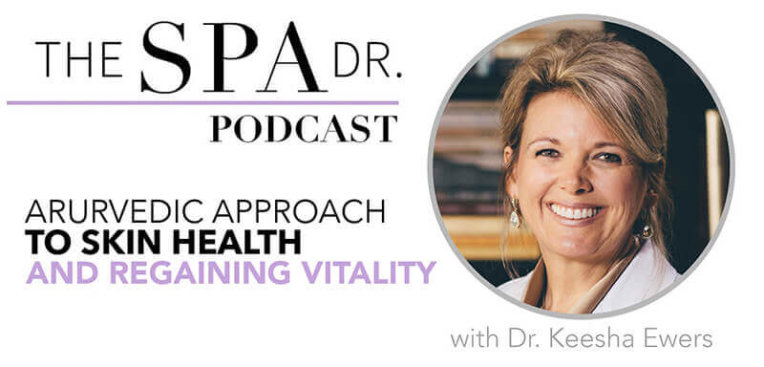
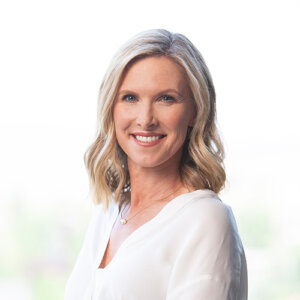
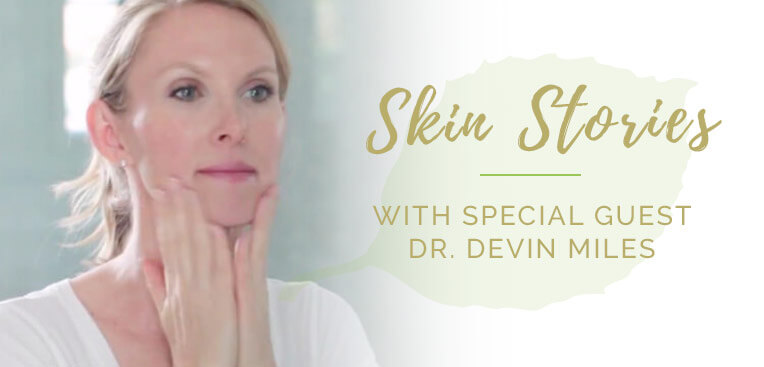
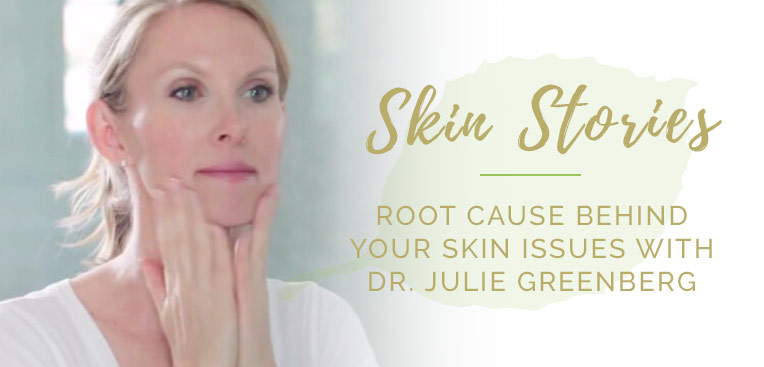
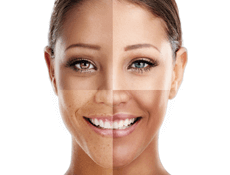



Reader Interactions